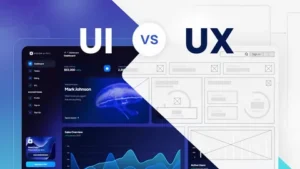Introduction
In the rapidly evolving digital landscape, an exceptional web design is the cornerstone of a successful online presence. Whether you’re an individual, a business, or an organization, having a visually appealing, user-friendly, and functional website is crucial. In this comprehensive guide, we will delve into the world of web design, providing you with valuable insights, expert strategies, and answers to frequently asked questions. Get ready to embark on a journey to craft digital experiences that captivate, engage, and convert.
Web Design: Transforming Ideas into Digital Masterpieces
Web design is more than just creating visually appealing websites; it’s about seamlessly blending aesthetics with functionality. It involves the process of conceptualizing, planning, and implementing the layout, colors, typography, and interactive elements of a website. It’s the art of transforming ideas into digital masterpieces that leave a lasting impression.
The Fundamentals of Web Design
Designing for User Experience (UX)
Web design is not just about aesthetics; it’s about enhancing user experience (UX). By understanding your target audience’s needs, preferences, and behaviors, you can create a design that resonates with them. Consider the user journey, easy navigation, and intuitive interfaces to keep visitors engaged and satisfied.
Responsive Design: A Must-Have
With the proliferation of mobile devices, responsive design has become paramount. Your website should adapt seamlessly to various screen sizes, ensuring a consistent and enjoyable experience for users whether they’re on a smartphone, tablet, or desktop.
The Psychology of Colors and Typography
Colors evoke emotions, and typography sets the tone. Choose colors that align with your brand’s personality and message. A harmonious combination of colors and typography can elevate your website’s visual appeal.
Visual Content and Imagery
Images and videos can convey messages more effectively than words alone. Incorporate relevant images and videos to create a captivating narrative.
Calls to Action (CTAs) that Convert
A strategically placed CTA can guide visitors towards desired actions, such as making a purchase, signing up, or contacting you. Use persuasive language and contrasting colors to make CTAs stand out.
Crafting Your Web Design Strategy
Understanding Your Brand Identity
Your website is a digital representation of your brand. Define your brand’s identity, values, and unique selling propositions. Incorporate these elements into your design to create a cohesive and authentic online presence.
Setting Clear Objectives
Before diving into the design process, identify your goals. Whether it’s increasing sales, building a subscriber list, or promoting awareness, clear objectives will guide your design choices.
Streamlining Navigation
Intuitive navigation is the backbone of a user-friendly website. Organize your content logically and ensure that visitors can find what they’re looking for with minimal effort.
Utilizing White Space
White space, or negative space, is the empty area around design elements. It enhances readability, creates a sense of balance, and draws attention to key content. Embrace white space for a clean and sophisticated design.
Incorporating Social Proof
Testimonials, reviews, and case studies build credibility and trust. Incorporate social proof elements strategically to showcase the value you provide and the positive experiences of others.
Common Web Design FAQs
How important is responsive design?
Responsive design is incredibly important in today’s mobile-driven world. It ensures that your website looks and functions well on all devices, enhancing user experience and SEO performance.
What role does website speed play in web design?
Website speed is critical. Slow-loading sites frustrate users and negatively impact search engine rankings. Optimise images, leverage browser caching, and choose a reliable hosting provider to improve speed.
Is DIY web design recommended for beginners?
While DIY web design tools are available, they might not offer the same level of customization and functionality as professional platforms. Beginners can start with templates but should consider professional help for complex projects.
How can I make my CTAs more effective?
To make CTAs more effective, use action-oriented language, create a sense of urgency, and place them where users’ attention is naturally drawn. A/B testing can help fine-tune their performance.
What are the key elements of a compelling homepage?
A compelling homepage should have a clear value proposition, easy navigation, impactful visuals, concise content, and prominent CTAs.
Is website maintenance important after launch?
Yes, website maintenance is crucial. Regular updates, security checks, and content refreshes ensure your site remains secure, up-to-date, and aligned with your evolving business goals.
Conclusion
In the ever-evolving digital landscape, web design is a dynamic and essential aspect of establishing a remarkable online presence. Remember, a well-designed website is a powerful tool that can make a lasting impact on your target audience.




